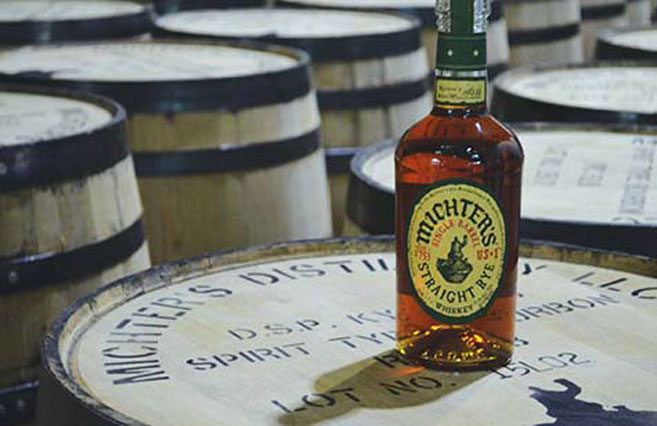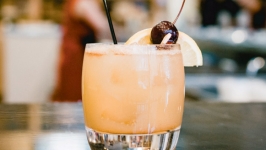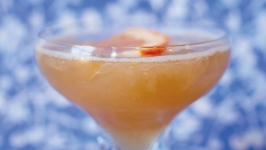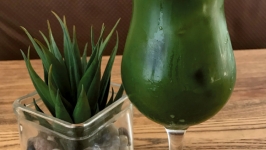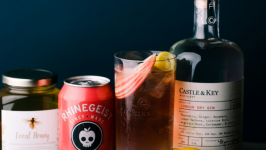Old Brand Makes Kentucky Its Home
Where better for Michter’s Whiskeys to put down roots?
An article on industrial whiskey distilling might seem a bit out of place in a magazine where some subjects spend their days harvesting food from soil. What with all the gleaming copper machinery, computers and chemical rearrangement required to make a good bottle of brown spirits, it’s hard at first to lead the mind back to the fact that great liquor starts in a windswept field of Kentucky corn.
See it now? Lovely, isn’t it, that dual vision of sturdy, stalk-bound maize harvested and converted to the stuff of juleps and old fashioned cocktails. Let the picture linger in your mind and you might even imagine angels humming “My Old Kentucky Home.”
No such charm tainted Joe Magliocco’s thoughts when searching for a distillery site for his Michter’s American Whiskeys brand 10 years ago. A New Yorker not predisposed to indulge in the rosy distortions of Kentucky nostalgia, Magliocco was at least 15 years into his grand plan to revive the historic, abandoned Pennsylvania whiskey brand when his friend and business consultant Dick Newman convinced him that a Kentucky-based operation was ideal.
“Dick said to me, ‘If you’re going to be serious about the whiskey business, you have to go to the heart of the distilling industry,’” recalled Magliocco. At that point, circa 1995, Michter’s was bottling whiskey made by other distillers, and Magliocco wanted to make his own. “He always said there’s no place for that like Kentucky, and I’m glad I listened to him.”
At that time, Newman was retired from his role as the man who ran the Old Taylor, Old Crow and Old Grand-Dad distilleries for the now-defunct National Distillers. Yet as a consultant, he remained well connected to the industry and was able to lead Magliocco to the state’s best stocks of bourbon and rye whiskeys resting in rickhouses. The current bourbon boom was nearly two decades away, giving Magliocco access to stock that later would sell for hundreds and sometimes thousands of dollars per bottle.
“Kentucky was awash in great whiskey that, frankly, no one wanted to buy at first,” Magliocco said. “Especially rye. People sometimes looked at us like we were crazy when we told them we had rye.”
But it wasn’t just Kentucky whiskey Newman wanted Magliocco to get.
He wanted the future Michter’s distillery to have easy access to industry resources available nowhere else in the nation.
“He kept saying, ‘Joe, there’s so much whiskey making talent and distilling knowhow in the area,’” Magliocco recalled. “He insisted that it would create synergies by having that available in one state — the knowledge base and the people to run it. I’m not a distiller, so I knew we needed all that.”
“Someone else’s kitchen”
After years of bottling others’ stocks, Michter’s began making its own whiskeys in another’s distillery using its own yeasts, recipes and specs, something Magliocco called “cooking in someone else’s kitchen. … It’s what we had to do at the time, but we knew we would eventually have our own place.”
As those eventualities worked themselves out, Magliocco assembled a team to run Michter’s when it opened. In 2007 he hired Brown-Forman veteran Willie Pratt as its master distiller, a role that gave Pratt oversight for spirits production and aging, while working with designers on the new distillery.
As Butchertown’s Vendome Copper & Brass Works built its still and fermenters, local operating talent surfaced. Pam Heilmann, then distiller at Jim Beam’s Booker Noe plant in Boston, Kentucky, the world’s largest bourbon distillery, got what she called “the opportunity of a lifetime … to start a distillery from scratch, from the ground up and to full production.” As vice president of production, Heilmann would work alongside Andrea Wilson, who left her post in whiskey strategy development for industry behemoth Diageo to become vice president and general manager at Michter’s.
“I thought it would be an amazing opportunity to be part of building a brand and leaving a legacy,” said Wilson, whose work at Diageo included the development of its Orphan Barrel program. Like Heilmann and Pratt, she lived in Kentucky. “Making bourbon is something I’m very passionate about, so being able to do that in my home state was really important to me.”
Peripheral talent was found as well in Louisville’s culinary community. Patrick Roney, executive chef at Harvest Restaurant, works as an ersatz culinary ambassador for the brand, routinely cooking dinners using Michter’s whiskeys as ingredients in food and accompanying cocktails. Cured ham maker Jay Denham, also a chef, has conducted numerous pairings of straight Michter’s and slices of his fatty and complex Mountain Hams.
“We’re really seeing now how well those whiskeys taste with food, which is somewhat an unexpected surprise,” Magliocco said. “I wish I could say it’s something in our process that makes that happen, but I can’t. All I know is that they work amazingly well in a culinary setting.”
Magliocco is proud that the bulk of the company’s corn — used in its bourbon, sour mash and American whiskeys — also comes from Kentucky and southern Indiana. (Currently, too little rye is grown in the state for distillers’ use.) All grains used by Michter’s are non-GMO, he added.
With all its whiskeys on allocation, meaning rationed out to each U.S. state and 26 international markets, Michter’s decided to double production this year by adding fermenters and a production shift. But since its whiskeys age a minimum of five years, tight supplies won’t soften for some time. Magliocco said every distiller is enjoying the current whiskey boom, but he said the decision to double production was not made hastily.
“All markets go down sometime, and they’re impossible to time,” he said. “In the meantime, we’ll make as much as we can and sell it when it’s ready.”
It’s not hard to spot the first barrel of bourbon ever filled at Michter’s Shively plant. Its staves are held together by gold-plated hoops and positioned near the main walkway through its rickhouse, so the barrel stands out among thousands of others bound by hoops of comparably bland galvanized iron.
Be they staffers or visitors, most all who see it joke that it’s all theirs or that they’d love an invitation to taste its contents when that first sample is thieved sometime around 2020.
Ironically, Magliocco predicts that barrel’s dumping (when the cask’s contents are drained) “will be a non-event because it’s the same stuff we’re selling now.”
It’s a startling claim given that, to that point, all previous Michter’s will have been distilled and aged elsewhere. Yet Magliocco insists technology such as the plant’s $160,000 gas chromatograph and mass spectrometer has ensured they’re distilling “an exact chemical fingerprint of the distillate we were making before, elsewhere.”
When he admits that it may be possible for the whiskey aged at the Shively location to taste marginally different, he reverses course almost immediately, confident that Pratt’s processes will yield a uniform result.
“We’ve stored our whiskey in heat-cycled warehouses before, too, and we’ve duplicated that system here,” he said. “Plus, Willie has temperature probes in bungs all around the warehouse to ensure all that temperatures and air circulation is correct.
“Honestly, I really doubt it will be any different. … But you’re right: Everyone wants to taste it.”
Steve Coomes is a former chef and freelance writer in Lousiville


